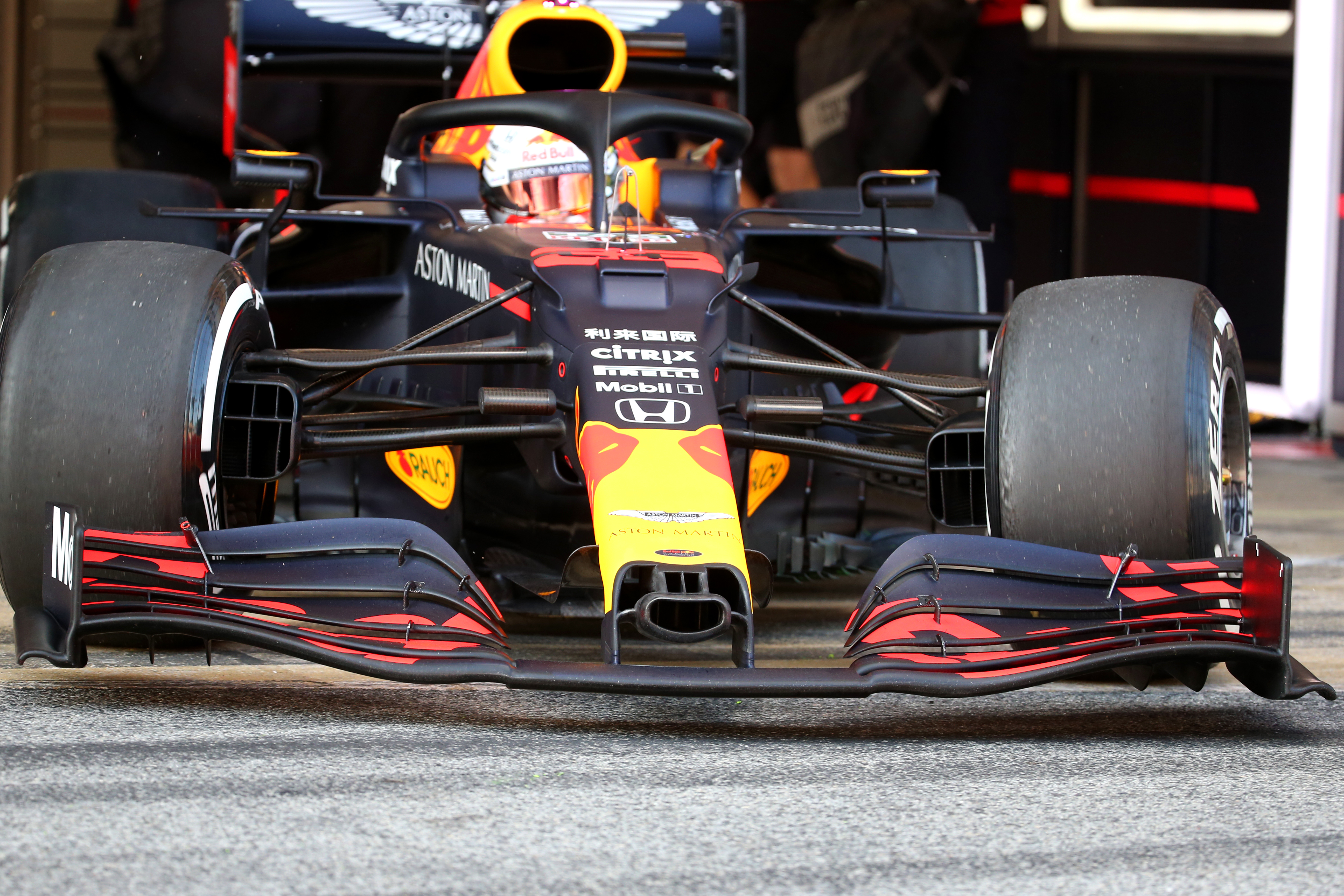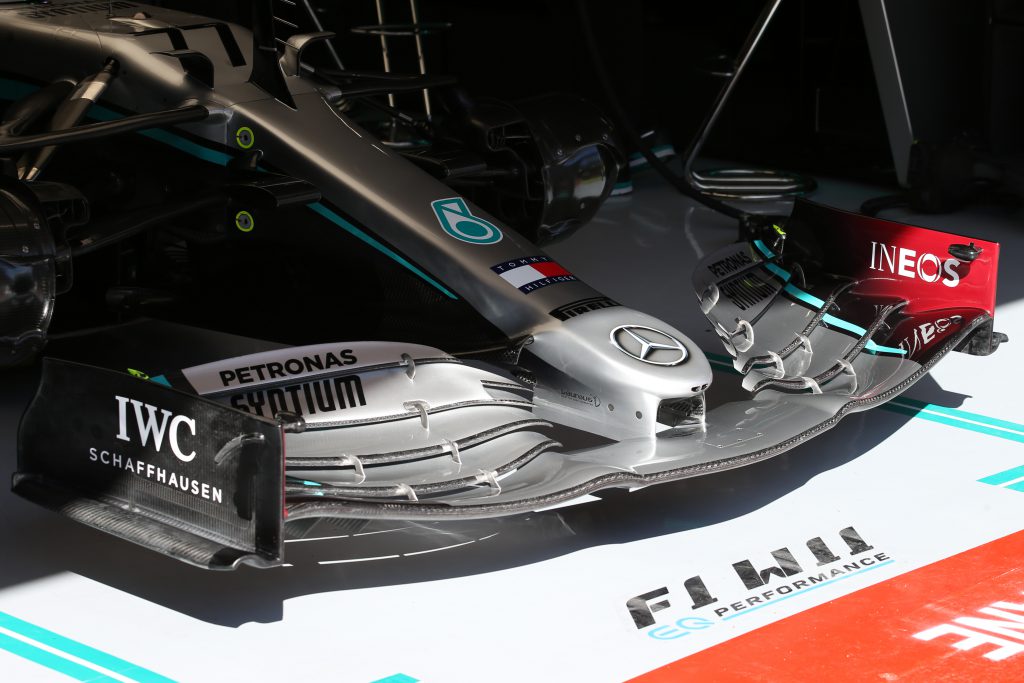Up Next

This is the second year of Formula 1’s new front wing regulations, which were introduced at the start of 2019 to reduce the outwash off the front wing endplate and therefore reduce the turbulent wake that made it difficult for one car to follow another.
This proved to be a waste of time, but it resulted in wings that looked much tidied and produced two significantly different concepts that have continued to evolve this year.
Mercedes started the season with what we called the ‘loaded outboard’ concept. In other words, there was quite a lot of wing angle on the flaps towards the outboard end working as a proper downforce-generating wing in this area.
As you change the angle of the front wheels, you’re changing how the wing works
Ferrari, by contrast, went for the ‘loaded inboard’ concept where the wing drops away more to allow more airflow between the front wing endplate and the outside of the front tyre.
We wondered who would be proved right, but there was also the suspicion that the designs would converge this year. While they have, to a certain extent, there are still clear differences.
Ferrari has been pretty stubborn over changing its concept, while Mercedes has changed a bit and dropped the outboard end down very slightly but nothing dramatic. There will be a nice compromise in there somewhere.
But there is another factor because as you change the angle of the front wheels, you’re changing how the wing works. So you can change the front downforce characteristics by applying steering lock. By turning the wheel, you’re effectively opening up both sides of the wing so the efficiency will increase as you increase the steering lock.
This is a good characteristic, normally the car will be set-up with a touch of understeer in fast corners – which gives the driver confidence – and then you can move the aerodynamic centre of pressure forward for slower corners (where you have most steering lock) where these cars normally understeer more. But this can make the front wings more pitch sensitive.
To understand in detail the different front wing configurations, we can compare the approach of the three big teams – Mercedes, Ferrari and Red Bull – as well as looking at the designs of McLaren and Alfa Romeo. The labelling of the various areas helps us to compare the different approaches.
Mercedes

The height of the endplate is represented by (A), which is a maximum height of 225mm measured 75mm up from the ‘reference plane’, which is the bottom of the chassis. All of the teams have it as big as possible because there’s an advertising campaign going on with the endplates, never mind a technical one. Then we have the gap underneath the wing (B). The gap from the top of the endplate to the top flap is denoted by (C).
That leaves you with (D), which is the front wing chord profile in that area so that’s the amount of front wing you’ve got at that outboard end. Last year, Mercedes won both World Championships, so we have to say that’s a pretty good solution.
Ferrari
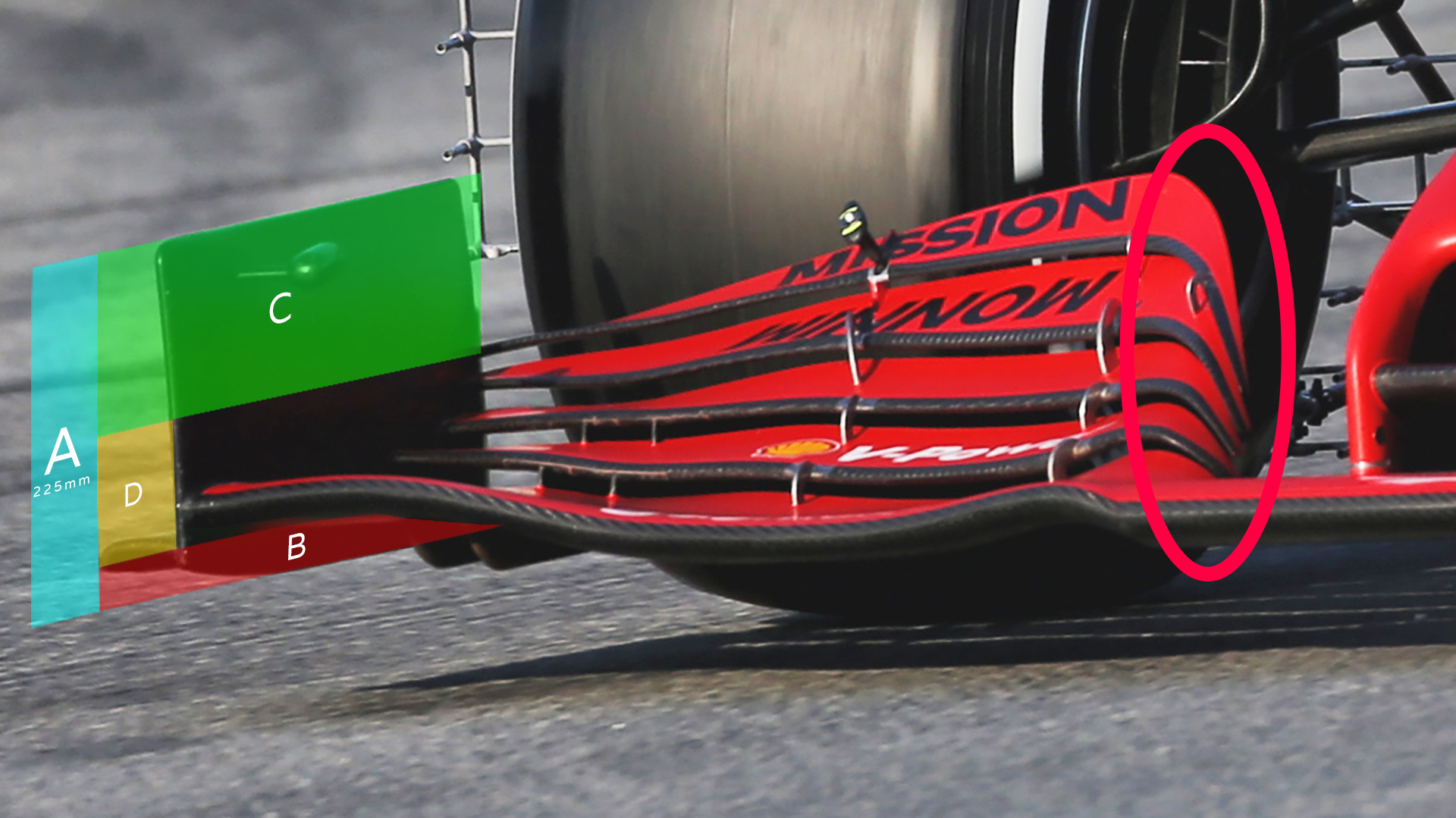
The Ferrari configuration is a little different. The height (A) is the same but (B) is narrower so the outboard end of the front wing is a little lower to the ground. Most significantly, the difference between the height of the endplate and the top flap (C) is substantially bigger than on the Mercedes. This allows more air to come around the front tyre.
That leaves you with (D), which is a smaller wing section so the Ferrari will not produce the same amount of downforce as a Mercedes. But it will be less sensitive to steering lock.
What can happen here is that the outboard end of the front wing, being closer to the ground, can almost touch the ground when the car rolls in the fast corners. Because that part of the wing is close to the ground, the ground effect principle kicks in to a greater degree instead of it being a wing working in free standing airflow.
The airspeed increases through this ever-diminishing gap until it just can’t travel any faster and when that happens some part of the wing will suffer an aerodynamic stall. It could be the mainplane or one of the other flaps – that is what defines the positioning and size of the slot gaps, also the flap angles
When this happens the wing loses downforce meaning the car loses front grip. If this stall is too dramatic – i.e. it loses too large a percentage of the front downforce – the car will start porpoising, with the front of the car bouncing up and down. This can also effect the car under braking.
The trick is to just stall the wing enough so that at some point the front wing downforce doesn’t increase as much as the rear does. That means that the rear of the car will feel more stable in the middle of fast corners.
There are two ways of fixing that. Mercedes has the wing a little higher to allow more airflow underneath, so you can then work the flaps a bit harder. Ferrari has the lower wing but has backed off the flap to reduce the stall of the wing by not working it as hard.
But Ferrari gets less change in the downforce with steering lock and therefore doesn’t get a front-grip gain because it isn’t opening up as aggressive a piece of wing. As a result, if you had two identical cars other than this and the balance was the same in fast corners then the Ferrari will have more understeer in slow corners.
Red Bull
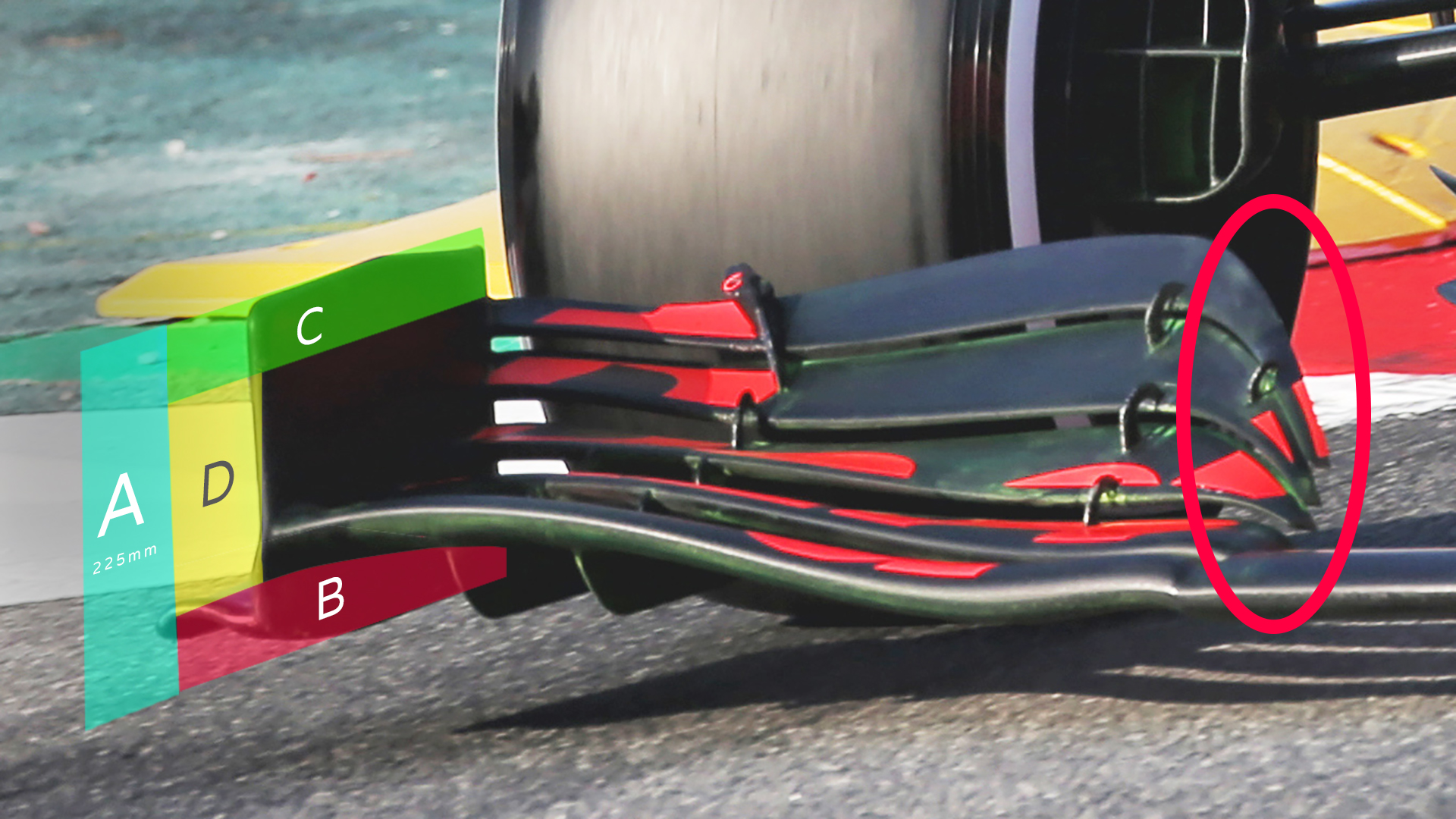
The Red Bull front wing is closer to the Mercedes concept but probably even more aggressive. The space underneath the wing (B) is very similar and Red Bull sweeps the outboard end of the wing up gradually so the pitch sensitivity is absent in the high-speed corners.
The gap from the top of the endplate to the uppermost flap (C) is smaller than on the Mercedes, so Red Bull has more wing in that position. That leaves us with a more aggressive piece of wing (D) but because the height (B) is quite big the car won’t be too pitch sensitive in the high speed corners.
Then because (D) is quite big, when you turn the steering wheel you get more downforce by working the wing harder. So this is perhaps an even better solution than the Mercedes.
Alfa Romeo
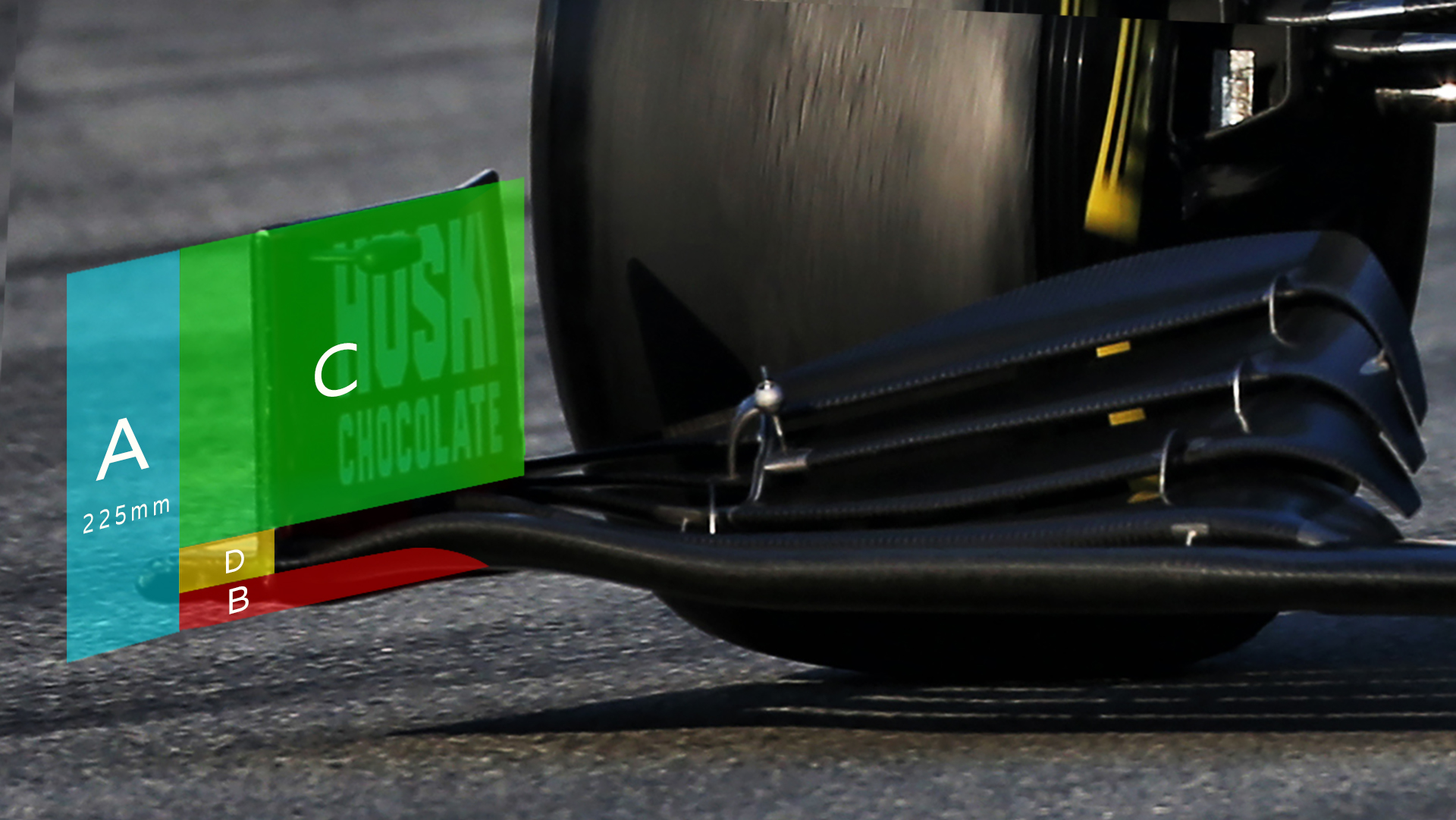
If I was to pick the worst front wing design, it would be the Alfa Romeo. Like last year, it’s following the Ferrari approach but even more so. The gap from the wing to the ground (B) is very small so it will be very pitch sensitive.
To counterbalance that, Alfa has dropped the top of the flap at the outboard end so that (D) – the wing area there – is almost zero. So in the low-speed corners, Alfa has no change of downforce to help with the understeer.
McLaren
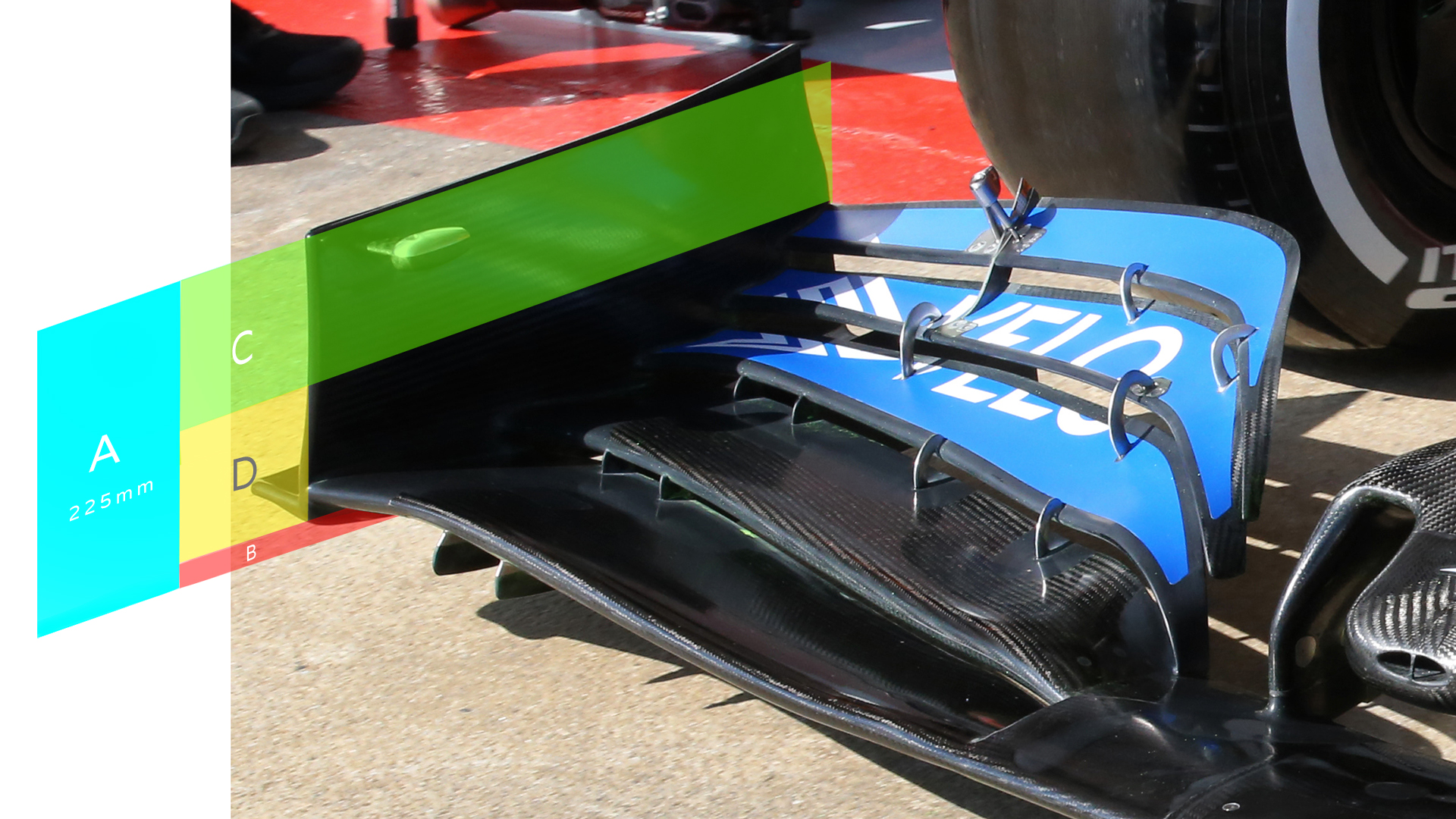
The McLaren is a little different to the other teams in that it doesn’t raise the mainplane of the front wing up from the bottom of the endplate as much as its rivals. This instead happens a little later, I’d say it’s too late.
You can also see a couple of splitters underneath the front wing from this angle and this is to effectively ‘compartmentalise’ the wings so that whenever that outer part stalls because the airflow can’t get underneath it, the same doesn’t happen to the rest of the wing. If you get a stall on the wing, it will spread, so it’s a good idea to box it off. Everyone will have the maximum allowed two splitters under the wing.
The McLaren front wing extreme outboard end looks too close to the ground (B). There is a compromise to be found but the result is that the gap from the top of the endplate to the top of the wing (C) needs to be increased, resulting in a smaller wing section (D). What McLaren has doesn’t seem the right compromise to me.
Inboard end comparison
On each front wing photo above, the inboard ends have been circled in red. You are allowed five elements maximum and on the Mercedes you can see there is the mainplane, which is continuous, the flaps drop away slightly and then on the fourth flap up there’s a small slot gap in the end of it. That’s there to keep the airflow attached to the surface underneath it because it’s working a bit too hard. But that means you can’t run the fifth flap all the way across.
On the Ferrari, this is used more as an endplate. Ferrari is dissipating the vortex generation because you have a low pressure underneath each flap and a high pressure above, where those two meet up you get a big vortex.
The Red Bull and Mercedes approaches seem the most effective, but Ferrari just doesn’t seem to have moved with the times
We used to talk about the Y250 vortex – created by the transition of the FIA-mandated neutral central section of the mainplane 125mm each side of the centre point of the wing – as critical in the past, but that doesn’t really do much anymore so you want to dissipate it. The Ferrari solution therefore reduces the drag from the front wing.
The Red Bull is similar to the Ferrari but the difference is that the first and second flap is actually part of the mainplane. So it has two flaps as one with a slot gap, whereas the rest have a mainplane then the flaps. Red Bull is working the wing harder, but reducing the vortex by dropping it down aggressively – which is a tidy solution.
The McLaren is the same approach as the Red Bull and the Alfa Romeo is similar to Ferrari.
So it’s all about the compromise. The Mercedes solution gives you more downforce with steering lock, which is a positive for low-speed corners and Ferrari doesn’t have that. The Red Bull and Mercedes approaches seem the most effective, but Ferrari just doesn’t seem to have moved with the times.
The Mercedes or Red Bull concept with 9 degrees of steering lock, so a tight corner, you might gain 5-10% of overall downforce compared to Ferrari gaining nothing. That’s a big difference.
It’s all about the centre of pressure, which let’s say is 40% front, 60% rear when going down the straight. When you get to a corner you turn the wheel say three degrees for a high-speed corner and you want that to stay stable but if anything move back a bit. If you could make it 39-61% you’d be very happy.
With six degrees steering lock for a medium-speed corner you want it to move forward more, say to 41-59% then for nine degrees you would want it more like 41.5-58.5% Managing this can give you a big gain in balance, particularly for the slower corners.
Although the front wing designs have converged slightly this year, there’s still a big difference in the concepts. But there are a lot of factors at play here, and overall the best compromise appears to lie with the Mercedes team that has won the last six World Championship doubles. The team that might challenge it, Red Bull, has taken a very similar and perhaps even more aggressive approach in its bid to overturn its long-term rival.
